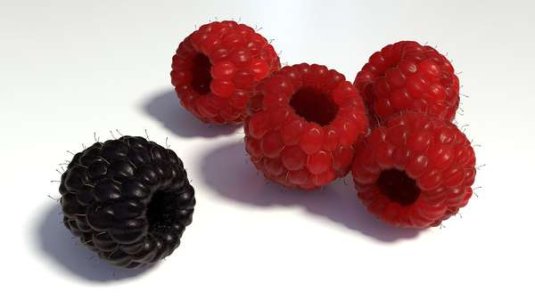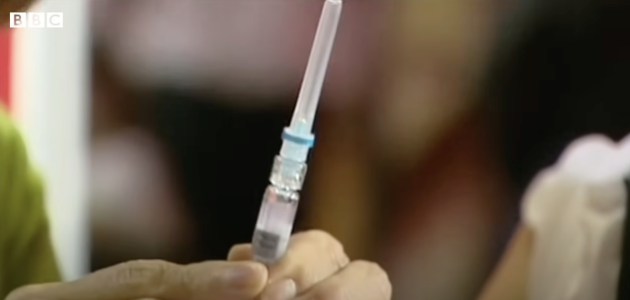Protect yourself from illness: Discover the surprising berries that could be harboring dangerous viruses!
- Replies 0
Berries are a delightful addition to any diet, bursting with flavor and packed with nutrients. They're the perfect topping for your morning cereal, a sweet addition to your smoothie, or a healthy snack on their own.
However, there's a hidden risk that berry lovers should be aware of: the potential for foodborne illnesses. What berries are affected?
The Food and Drug Administration (FDA) has recently taken steps to address this concern. On January 17, the FDA announced a new strategy aimed at reducing the risk of viruses in berries.
This initiative seeks to ensure higher compliance with food safety standards, expand scientific understanding of viruses in food, and encourage industry and government to adopt preventive measures, including immunization programs to protect worker health.
But which berries are most at risk, and what can you do to protect yourself? Let's dive into the insights provided by food safety experts.

The primary viruses of concern are norovirus and hepatitis A.
Norovirus is notorious for causing gastroenteritis, leading to symptoms like vomiting and diarrhea, often simultaneously.
Hepatitis A, on the other hand, affects the liver and can result in symptoms such as diarrhea, fatigue, joint pain, and jaundice (yellowing of the skin or eyes).
While all berries have the potential to carry viruses, frozen berries are particularly susceptible.
According to a joint panel from the United Nations and the World Health Organization, frozen berries carry the “highest global health public burden” for spreading viruses like norovirus and hepatitis A.
Darin Detwiler, LPD, author and professor at Northeastern University, explains that freezing preserves these viruses, keeping them infectious even after being thawed for consumption.
The Challenge of Berry Contamination Berries are often hand-harvested by workers who may lack access to proper hygiene facilities or training.
If a worker is infected with norovirus or hepatitis A and doesn't wash their hands thoroughly, they can transfer the virus to the berries.
These viruses are also highly resilient, making them difficult to eliminate. Furthermore, washing berries without damaging them is a challenge, so prevention of contamination is crucial from the moment of harvest.
Despite the risks, it's important to note that outbreaks linked to berries, particularly those grown in the US, are not common. However, taking precautions is still wise.
Research suggests that using a combination of water and fruit and vegetable sanitizers containing peroxyacetic acid and hydrogen peroxide can reduce levels of norovirus and hepatitis A on fruit. Investing in a fruit rinse could be a beneficial step in ensuring the safety of your berries.
In addition to using fruit rinses, consumers can take other steps to minimize risk:
- Purchase berries from reputable sources that follow strict food safety protocols.
- If possible, choose fresh berries over frozen, and consume them quickly after purchase.
- Wash your hands thoroughly before handling any food, including berries.
- Store berries at the correct temperature to inhibit viral survival.
 Have you ever experienced issues with contaminated fruits, or do you have any tips for ensuring the safety of your fruit? Share your thoughts and experiences in the comments below!
Have you ever experienced issues with contaminated fruits, or do you have any tips for ensuring the safety of your fruit? Share your thoughts and experiences in the comments below!
However, there's a hidden risk that berry lovers should be aware of: the potential for foodborne illnesses. What berries are affected?
The Food and Drug Administration (FDA) has recently taken steps to address this concern. On January 17, the FDA announced a new strategy aimed at reducing the risk of viruses in berries.
This initiative seeks to ensure higher compliance with food safety standards, expand scientific understanding of viruses in food, and encourage industry and government to adopt preventive measures, including immunization programs to protect worker health.
But which berries are most at risk, and what can you do to protect yourself? Let's dive into the insights provided by food safety experts.

The FDA has implemented a new strategy to lower the risk of norovirus and hepatitis A contamination in berries. Image source: MasterTux / Pixabay.
The primary viruses of concern are norovirus and hepatitis A.
Norovirus is notorious for causing gastroenteritis, leading to symptoms like vomiting and diarrhea, often simultaneously.
Hepatitis A, on the other hand, affects the liver and can result in symptoms such as diarrhea, fatigue, joint pain, and jaundice (yellowing of the skin or eyes).
While all berries have the potential to carry viruses, frozen berries are particularly susceptible.
According to a joint panel from the United Nations and the World Health Organization, frozen berries carry the “highest global health public burden” for spreading viruses like norovirus and hepatitis A.
Darin Detwiler, LPD, author and professor at Northeastern University, explains that freezing preserves these viruses, keeping them infectious even after being thawed for consumption.
The Challenge of Berry Contamination Berries are often hand-harvested by workers who may lack access to proper hygiene facilities or training.
If a worker is infected with norovirus or hepatitis A and doesn't wash their hands thoroughly, they can transfer the virus to the berries.
These viruses are also highly resilient, making them difficult to eliminate. Furthermore, washing berries without damaging them is a challenge, so prevention of contamination is crucial from the moment of harvest.
Despite the risks, it's important to note that outbreaks linked to berries, particularly those grown in the US, are not common. However, taking precautions is still wise.
Research suggests that using a combination of water and fruit and vegetable sanitizers containing peroxyacetic acid and hydrogen peroxide can reduce levels of norovirus and hepatitis A on fruit. Investing in a fruit rinse could be a beneficial step in ensuring the safety of your berries.
In addition to using fruit rinses, consumers can take other steps to minimize risk:
- Purchase berries from reputable sources that follow strict food safety protocols.
- If possible, choose fresh berries over frozen, and consume them quickly after purchase.
- Wash your hands thoroughly before handling any food, including berries.
- Store berries at the correct temperature to inhibit viral survival.
Key Takeaways
- The FDA has implemented a new strategy to lower the risk of norovirus and hepatitis A contamination in berries.
- Frozen berries have been identified as having the highest global health public burden for spreading these viruses.
- The contamination risk is partially due to berries being hand-harvested by workers who may lack proper hygiene facilities and training.
- To reduce the risk of contamination, it is suggested to use a mix of water and sanitizers containing peroxyacetic acid and hydrogen peroxide on the berries.






